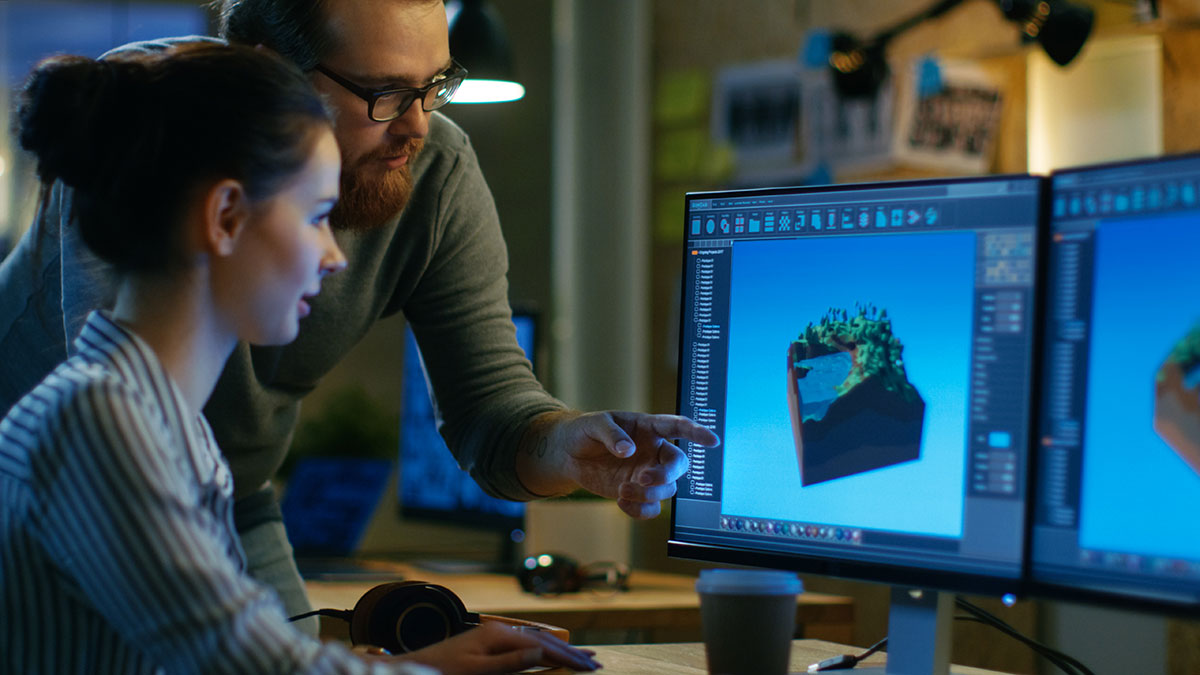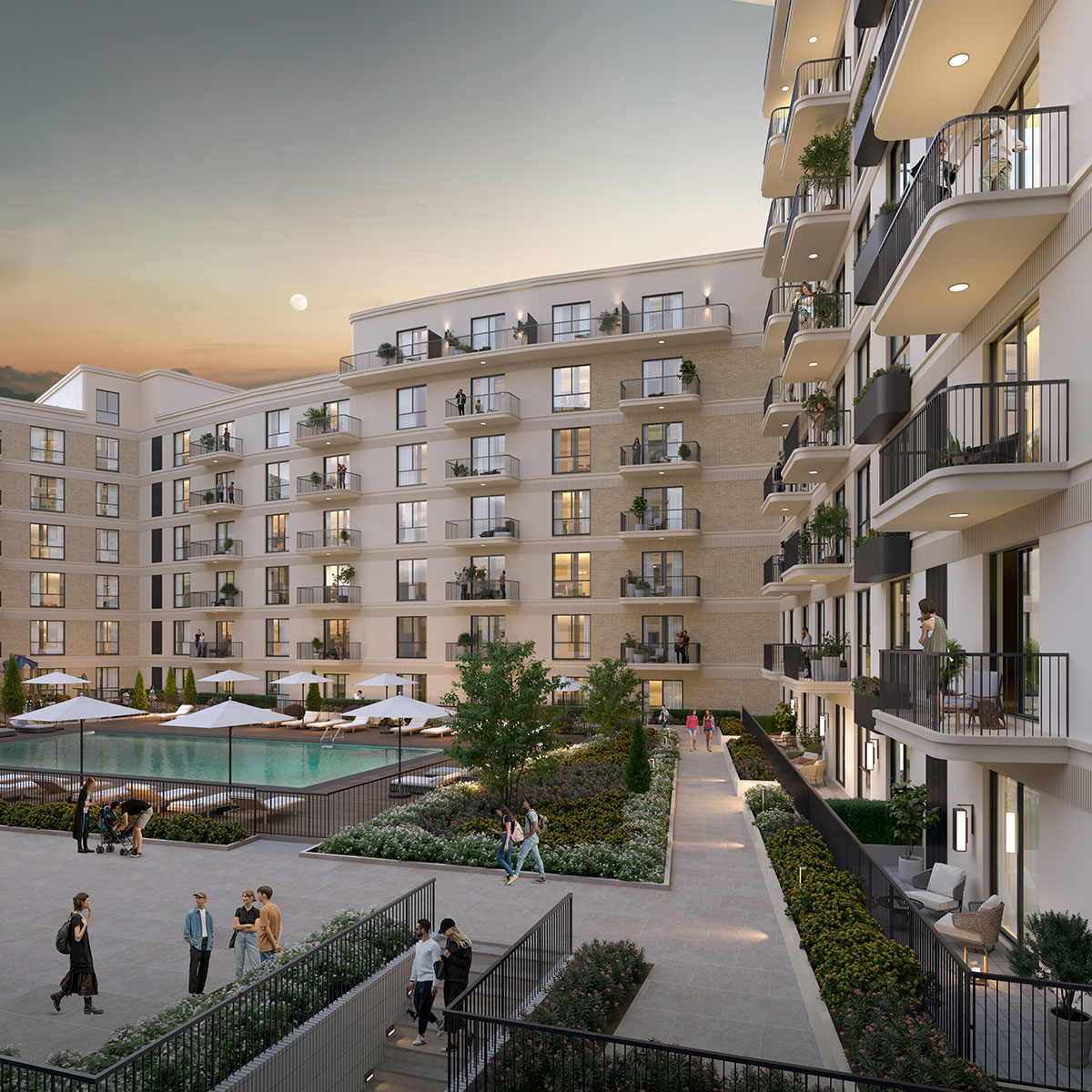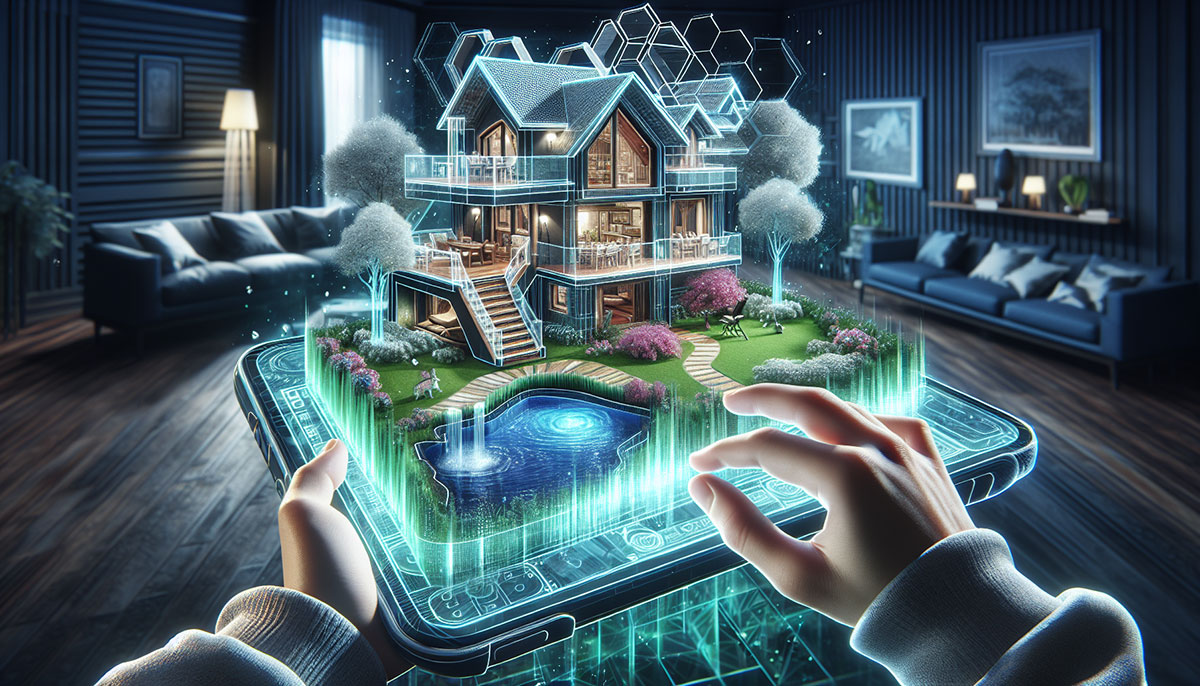Top Tools for 3D Modeling of House: Get a Design For Your Dream Home with Ease

3D agora
June 3rd, 2024

Looking to bring your dream home to life before laying the foundation? 3D modeling of a house is essential for envisioning future construction. This article breaks down the top software and techniques, helping you choose the right tool for crafting a virtual model of your home, while highlighting how technologies like augmented reality can enrich the design experience. Get ready to transform your ideas into a 3D reality.
How a 3D Artist Can Help
 Image by gorodenkoff, iStock
Image by gorodenkoff, iStock
Ever wondered how architects and home builders ensure that their designs will look exactly as envisaged, even before construction begins? The answer lies in the skills of 3D artists. These talented individuals can generate lifelike images that allow clients to visualize finished projects in stunning detail. They use 3D rendering to include various elements like lighting, texture, and mood in their designs, creating realistic representations of proposed designs.
In addition to this, 3D artists contribute significantly to various aspects of construction teams. They are responsible for architectural design, creating animated tours, and developing walkthroughs of buildings. This not only gives clients a better understanding of their future homes but also provides them with immersive experiences of the rendered spaces thanks to virtual reality and 360-degree viewing technologies.
Exploring the Top 3D Home Design Software
 Created by Arqsix
Created by Arqsix
In a world where technology is influencing every aspect of our lives, home design is no exception. With a plethora of software options available, choosing the right one to create your dream home can be a daunting task. The leading 3D home design software options, such as HomeByMe, Chief Architect Home Designer Suite, and DreamPlan, cater to the needs of both casual amateurs and professional architects. These tools offer a variety of options, from browser-based and mobile solutions to user-friendly interfaces, catering to users who prioritize flexibility and convenience.
However, this is just a glimpse. Let’s probe further into the realm of 3D home design software.
Creating Your Future Home with Advanced Tools
Imagine being able to walk through your future home, experiencing every room, every corner, before it’s even built. Sounds like science fiction, right? Well, thanks to advanced tools in 3D design software, it’s now a reality. These tools allow the visualization of future homes in real life, aiding in bringing dream homes from concept to virtual reality.
What’s more, these tools facilitate immersive experiences such as virtual walkthroughs and the rendering of materials in a way that closely mimics their real-world counterparts. This means you can see how the sunlight filters through the windows, how the shadows shift throughout the day, and how different materials look under various lighting conditions. You can even visualize your home from multiple angles, ensuring the design aligns with the surrounding natural landscape.
Building an Entire House from Scratch
Building an entire house from scratch might sound like a Herculean task. But with the right tools, it can be a breeze. Modern 3D home design software allows users to design walls and partitions in 2D, model roofs, and even adapt measurements to fit their design needs.
The scope goes beyond that. You can alter the dimensions of doors and windows, adjusting the height, width, and elevation to meet your design requirements. Moreover, most software comes equipped with drag-and-drop capabilities for placing doors, windows, and furniture onto the floor plan, simplifying the creation of fully-realized 3D house designs.
Furnishing Your Virtual Space
Once you’ve built your virtual house, the next step is to turn it into a home. And for that, you need furniture. Luckily, 3D home design software like Planner 5D, Homebyme, and Chief Architect Interiors come with comprehensive libraries of branded products, appliances, and furniture.
Whether you’re looking for a stylish sofa for your living room, a sleek kitchen set, or a cozy bed for your bedroom, the best software options have you covered. They offer a vast catalog of items, with multiple color and material options to choose from. And the best part? You can alter the dimensions of most pieces of furniture to fit different room sizes, allowing for customized arrangements that perfectly match your vision.
The Art of Architectural Visualization for Everyone
Architectural visualization is no longer a privilege reserved for professional architects and designers. Thanks to advancements in technology, anyone with a creative mind and a passion for design can now create stunning 3D models of their dream homes. Using 3D home design software, users can create detailed and fully furnished home designs that enhance the client-buying experience by enabling designs to be handled in-house.
Let’s explore further in this captivating domain.
From Concept to Creation in Just a Few Minutes
 Image by PeopleImages, iStock
Image by PeopleImages, iStock
Creating a detailed 3D model of a home used to be a time-consuming process, requiring extensive training and expertise. Not anymore. Software like SketchUp offers user-friendly interfaces that cater to both professionals and beginners, making the process of creating a 3D model quick and easy.
Whether you’re a professional interior designer working on a major renovation project or a homeowner looking to spruce up your living room, these interior designs tools have got you covered. They give you the flexibility to visualize your design ideas from multiple perspectives and manage details like ceilings and flooring efficiently. The icing on the cake? You can expedite your project by starting with a blueprint and opting for furnishings and materials that align with your vision.
Realistic HD Images to Inspire Clients
When it comes to home design, seeing is believing. High-definition images play a crucial role in helping clients make informed decisions about layouts, interiors, and exteriors. These images, generated from 3D renderings, allow clients, including real estate professionals, to experiment with various architectural styles, color schemes, and landscaping options before the construction begins.
Moreover, the Renders feature in design software enables the capture of detailed and realistic images of house designs. This means clients can visualize potential designs in stunning detail, refining their choices before the real-world construction begins.
Augmented Reality: A New Dimension in Home Design
The future of home design is here, and it’s augmented. Augmented Reality (AR) is revolutionizing the home design industry, allowing designers and clients to visualize finished designs within the actual environmental context using an augmented reality feature. This provides a realistic sense of space and decoration, making the design process more interactive and engaging.
But how does it work, and what does it mean for you as a designer or a homeowner? Let’s uncover that.
Visualize Your Dream Home in Real-Time
 Generated by SurferAI
Generated by SurferAI
Have you ever wished you could see your dream home in real-time, even before it’s built? With AR technology, that’s now possible. AR allows you to place virtual furniture and decor items within your real environment, helping you refine your design choices and spatial planning.
Apps like MagicPlan offer AR functionality that lets you:
Experience your design projects in context
Get a better understanding of your design
Make changes in real-time
Ensure your dream home turns out just the way you envisioned it.
Engaging Clients with Immersive Experiences
With AR, home design is no longer a one-way street where architects and interior designers present their designs to clients. Instead, it’s become a collaborative process, with clients actively participating in the design process. The HOVER app, for example, allows clients to see various styles and color combinations applied to a 3D model of their home, making design choice visualization interactive and immediate.
These immersive AR experiences not only enhance client engagement but also streamline the design process. By providing vivid and detailed design previews, AR promotes effective communication between clients, architects, and designers, which is essential for a collaborative design process.
Tailored Solutions for Remodeling Projects
Whether you’re looking to revamp your kitchen or add a new room to your home, 3D design software can provide tailored solutions for your remodeling projects. With software like HomeStyler and Chief Architect, you can plan your renovations in detail, visualize the final outcome, and even get cost estimates.
Let’s explore further on how these tools can be utilized for remodeling projects.
Transforming Existing Spaces
Transforming an existing space can be a daunting task. You need to take into account the existing layout, make sure your new design fits in with the rest of the house, and ensure that the final result is both functional and aesthetically pleasing. With software like RoomSketcher, this process becomes a lot easier.
These tools allow you to create floor plans by:
Importing existing house plans
Converting them into editable 3D models
Making adjustments to the layout
Altering walls
Adding doors and windows
Devising a new plan that perfectly matches your vision
With these tools, transforming existing spaces is no longer a daunting task, but an exciting journey of creativity and innovation.
Adding Extensions and New Elements
Adding extensions and new elements to your home can be a great way to increase its value and enhance its functionality. But without the right tools, this process can be challenging. Software like RoomSketcher, HomeStyler, and SketchUp make this task a breeze by providing tools to add new rooms and extensions to existing house layouts.
You can design not only room extensions but also plan details for outdoor spaces, including furniture and rainwater cisterns. These tools allow you to upload existing floor plans and design new elements that accord with the original home structure, ensuring a seamless integration of the new and the old.
Collaborative Platforms for Designers and Clients
Design is a collaborative process. It involves multiple stakeholders, each bringing unique perspectives and ideas to the table. In this context, collaborative platforms play a crucial role in facilitating effective communication and ensuring the successful completion of projects.
Let’s explore further how these platforms are revolutionizing the collaboration between designers and clients.
Sharing Ideas and Receiving Feedback
Collaboration is all about sharing ideas and receiving feedback. In the world of design, constructive feedback can be the difference between a good design and a great one. Collaborative proofing software like Ziflow streamlines the design process by efficiently managing multiple rounds of design review and feedback.
These tools offer features like contextual commenting and version comparisons, which provide deep support for the holistic improvement of designs. By incorporating diverse feedback from project managers, clients, and creative peers, you can significantly uplift your design’s quality and contribute to ongoing improvement.
Streamlining Project Management
Managing a design project can be a complex task. It involves coordinating with multiple stakeholders, tracking progress, managing finances, and ensuring timely completion. Modern design software comes equipped with project management tools that can help streamline these tasks.
These tools offer features like task management, issue tracking, time tracking, cost reporting, and budgeting, which can greatly simplify project management. Moreover, they provide customization options like defining workflows, creating custom fields, and managing roles and permissions, allowing for a more tailored project management experience.
Finding Inspiration and Resources
Design is as much about inspiration as it is about technical skills. Finding the right inspiration and resources can be crucial for bringing your design ideas to life, whether you are an amateur designer or a seasoned professional. Fortunately, 3D home design software provides a wealth of resources to fuel your creativity.
For beginners, one of the most valuable resources available is built-in video tutorials, which help explain the inner workings of interior design software. These tutorials provide step-by-step guidance that supports users in learning how to use the tools necessary to realize their design vision, thanks to the easy user interface.
From Drawing Board to Dream Home
 Image by vm, iStock
Image by vm, iStock
The journey from drawing board to dream home is a fascinating one. It starts with a focus on the home’s functionality to ensure it meets the practical needs of the occupants. From there, it’s all about refining the vision, going through several iterations until the perfect design is achieved.
A case study from Detroit, Michigan, exemplifies this process. CAD plans were turned into an enticing 3D model of a beachy-themed home, complete with carefully selected minimal glare light tones and cohesive stone shades.
Innovations in Construction and Design
The world of home design is constantly evolving, with new innovations transforming the way we design and build homes. One of the leading software options used for engineering and construction drawings, Autodesk 3ds Max, is a testament to these advancements.
This software demonstrates how technology is impacting home design, enabling architects and designers to:
Create detailed 2D and 3D designs with unparalleled ease and efficiency
Collaborate with clients and stakeholders in real-time
Visualize and experiment with different materials, colors, and layouts
Generate accurate cost estimates and project timelines
Communicate design ideas effectively to clients and contractors
Whether you’re a professional architect working on a major project or a homeowner looking to renovate your kitchen, these tools can help you bring your vision to life.
Summary
In conclusion, the world of home design has been revolutionized by advances in technology. From 3D artists who bring your dream home to virtual reality, to software that allows you to build a house from scratch, to augmented reality that enhances client engagement - the possibilities are endless. So whether you’re a professional designer or a homeowner with a vision, there’s never been a better time to bring your dream home to life.